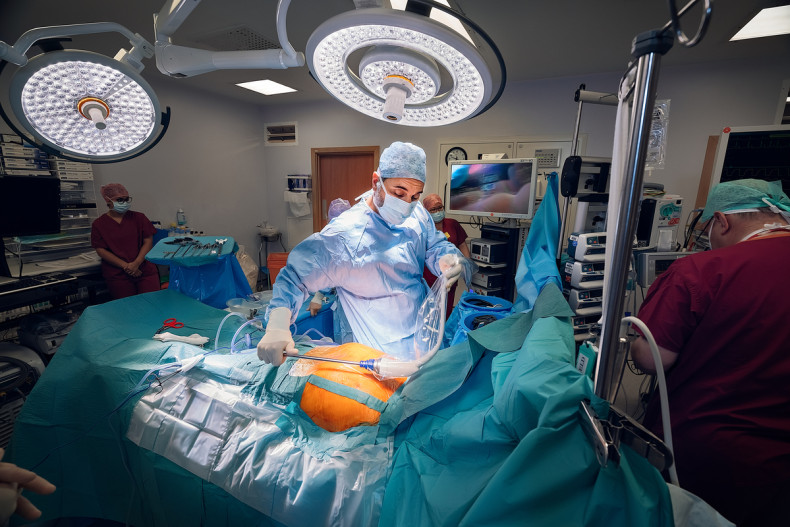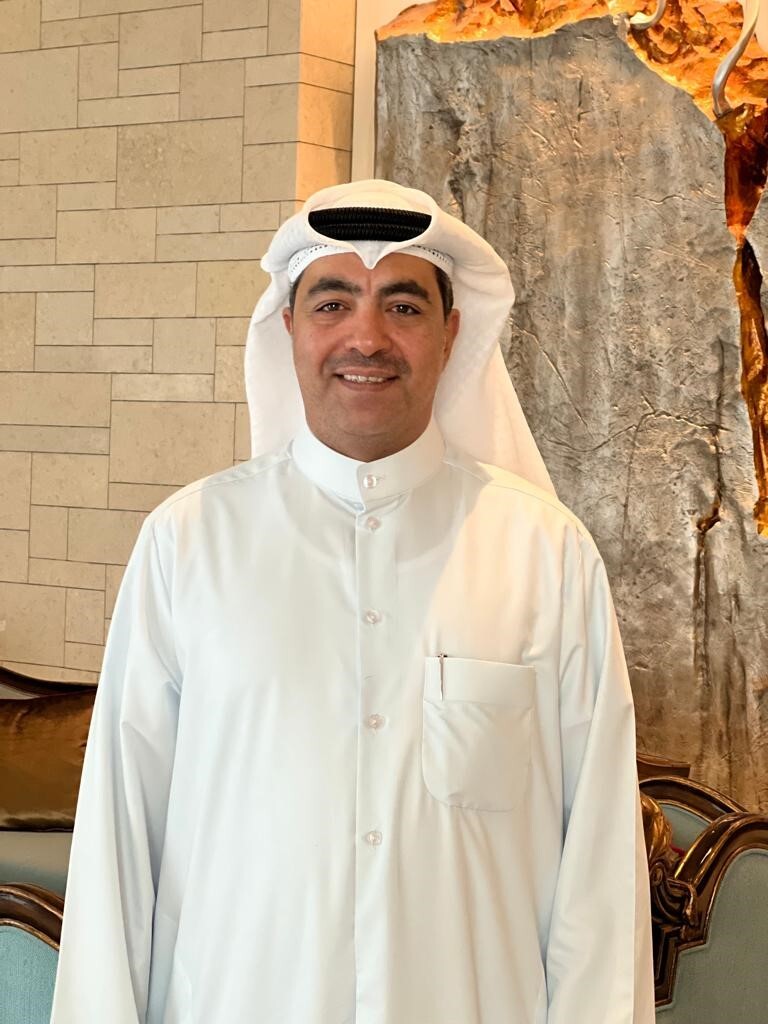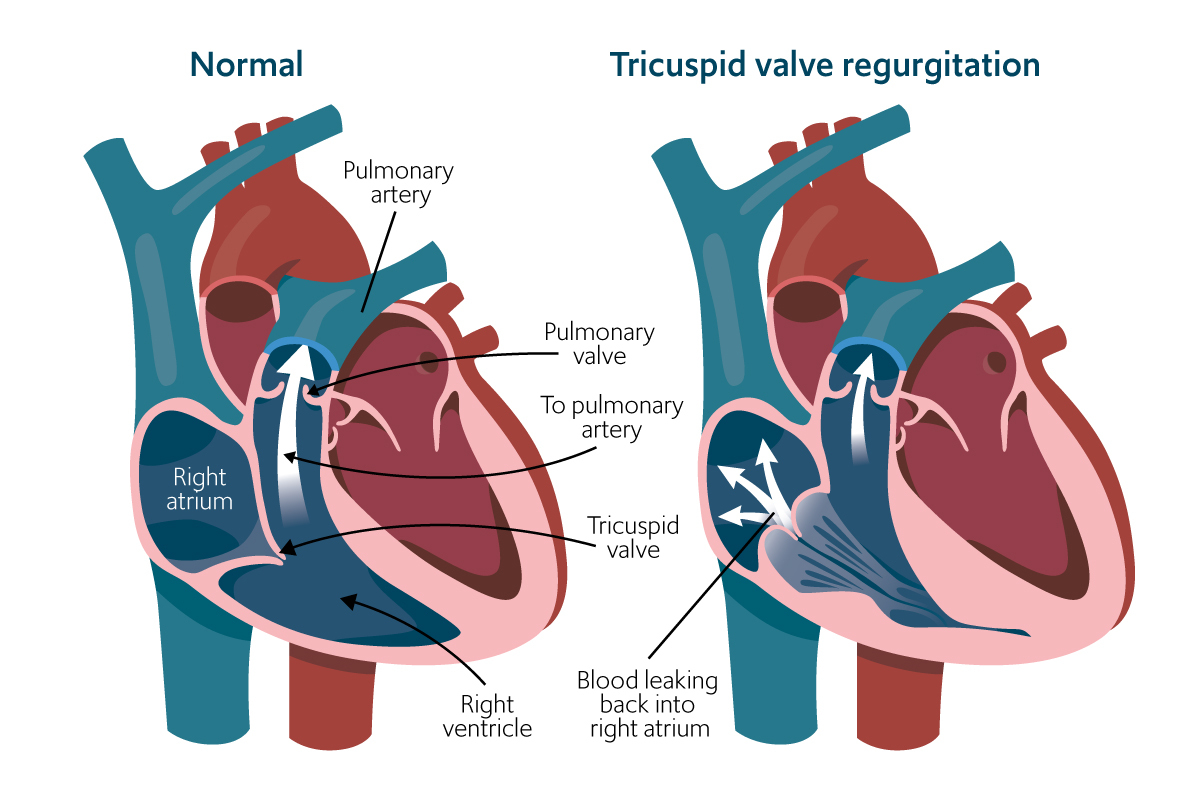Our consultant cardiac surgeons have pioneered a new totally endoscopic surgery for mitral valve repair. The procedure, which offers an alternative to minimally invasive and sternotomy, allows for a quicker patient recovery time and better aesthetic results.
The growing burden of heart valve disease
As life expectancy rises, the burden of heart valve disease has increased accordingly, with moderate to severe heart valve disease affecting 13% of people aged 75 and over. Disease of the mitral valve (which allows blood to flow from the left atrium to the left ventricle) is common, with mitral regurgitation the second most frequent indication for valve surgery in Europe.
If left untreated, a faulty mitral valve can cause breathlessness, dizziness and fatigue, with progressive outcomes including arrhythmias, heart failure and death.
The evolution of our endoscopic procedure
A sternotomy was the well-established procedure for mitral valve repair. However, after making adaptations towards small sternotomy, and then to a minimally invasive procedure, which relies on a 5cm incision, our consultants have further evolved the treatment. We are now able to offer a completely endoscopic procedure with only a 3cm incision, and without rib spreading.
Performed exclusively at Royal Brompton and Harefield hospitals, the endoscopic procedure is designed to treat patients with mitral valve disease but is also suitable for tricuspid and aortic valve repair.
Taking around four hours and performed under general anaesthetic, a small incision is made between the ribs for placing the endoscope, and another incision is made in the groin to use the artery and vein for performing the bypass. Using specific endoscopic instruments, which can rotate 360 degrees, our surgeons are able to access multi-angled and precise views of the heart.
“The quality of repair is the same as a sternotomy and minimally invasive approach but with much higher precision and with less scaring,” explains Mr Toufan Bahrami, consultant cardiac surgeon at Royal Brompton Hospital.

Our consultant cardiac surgeons have adapted the procedure for mitral valve repair.
3D technology has revolutionised our way of working
A high-definition 3D camera is used to direct the procedure inside the heart and the surgeon can then repair or replace the damaged valve. During the procedure, our surgeons wear 3D glasses and are guided by images projected onto a 3D screen, which aids collaboration as all surgeons in the room can see the same thing. Furthermore, the projected images can be accessed remotely via the internet, allowing our specialists to collaborate from anywhere in the world.
Mr Bahrami says: “This pioneering technology has revolutionised the way we work, as we’ve never had such a view of the operating field. We can now access views from deep inside the chest, through high-quality 4K images – and one big advantage of this, is that we can use the 3D projections to teach our trainees.”
Gold-standard approach and results
“Totally endoscopic microsurgery has similar results to a standard procedure, but allows for a much smaller incision, with less bleeding, less pain and less infection. The procedure also allows for much higher precision, which results in a quicker recovery,” says Mr Bahrami.
“With a sternotomy, the patient cannot drive for six to eight weeks but with this microsurgery they can drive within three weeks. After a sternotomy the patient cannot sleep on their side or lift anything heavy for two months, but after endoscopic surgery, they can do those things much sooner,” he adds.
Due to its minimally invasive nature, patients are usually discharged after three days. Within four weeks our patients have reported being active again and feeling positive, with minimal scarring and fewer complications, when compared to a standard procedure. “Without minimally invasive and totally endoscopic options, we would not be able to provide these gold-standard results,” adds Mr Bahrami.
A patient’s perspective
When 47-year-old Mr Fayez Boti began experiencing night sweats, arrythmias, fainting and difficulty breathing, he sought medical help in his home country of Kuwait.
After unsuccessful treatment Mr Boti refused open-heart surgery, but on hearing of Mr Bahrami’s new endoscopic procedure, he shares: “When Mr Bahrami explained how he would perform the endoscopic surgery, I was happy to do it.”
The Kuwait Ministry of Health referred Mr Boti to Royal Brompton Hospital, where Mr Bahrami diagnosed him with second-degree heart block and torrential tricuspid regurgitation. Keen to operate quickly, Mr Bahrami performed an endoscopic tricuspid valve replacement in June 2022.
Speaking on the treatment’s success, Mr Boti says: “My scars are very limited, and I feel normal again. I went from minus 100% to 100%. I’m a survivor and I appreciate Mr Bahrami for making me alive again after years of suffering. I think I’m one of the luckiest people in the world.”
Mr Boti was treated by Mr Bahrami


Tricuspid regurgitation: The heart works harder to push blood forward.
The recommended treatment for heart valve repair
The Society of Cardiac Surgeons has approved that all patients in the UK should be offered a minimally invasive approach. If a patient requests the treatment and their existing surgeon doesn’t perform it, they must be referred to someone who performs the surgery.
“We are the only surgeons in the UK who perform this totally endoscopic treatment and have a dedicated heart team for mitral valve repair,” says Mr Bahrami. Every patient goes through our multi-disciplinary team, where we offer endoscopic, MitraClip, TriClip and minimally invasive treatments.
MitraClip and TriClip are minimally invasive transcatheter procedures, designed to treat mitral and tricuspid valve regurgitation. These two procedures are usually offered to patients who are at very high surgical risk points, who may have had previous heart surgery or have other heart or lung problems.
The endoscopic mitral valve repair procedure can be performed on most patients as there are no contraindications on sex, age, health state or chest shape. The only patients who don’t qualify for a total endoscopy are patients who have had concomitant mitral valve and bypass surgery, or concomitant mitral valve and aortic valve surgery, in which case we offer alternative minimally invasive approaches.
“Since 2001 we have performed 3,000 minimally invasive procedures, 500 of which are minimal access mitral valve surgeries, and about 100 of those are totally endoscopic,” states Mr Bahrami.
For more information or to book an appointment, please contact our customer care team.
-
Aortic stenosis
Aortic stenosis is a disease that affects the main outlet valve of the heart and is the third most common cardiovascular disease.
-
Mitral regurgitation
Mitral regurgitation is the most common heart valve problem worldwide. It is a dysfunction of the heart’s mitral valve.
-
Heart valve repair or replacement
Heart valve surgery can repair or replace a damaged valve.
-
Valvular heart disease
Heart valve disease occurs when the valves of the heart become diseased or damaged.
